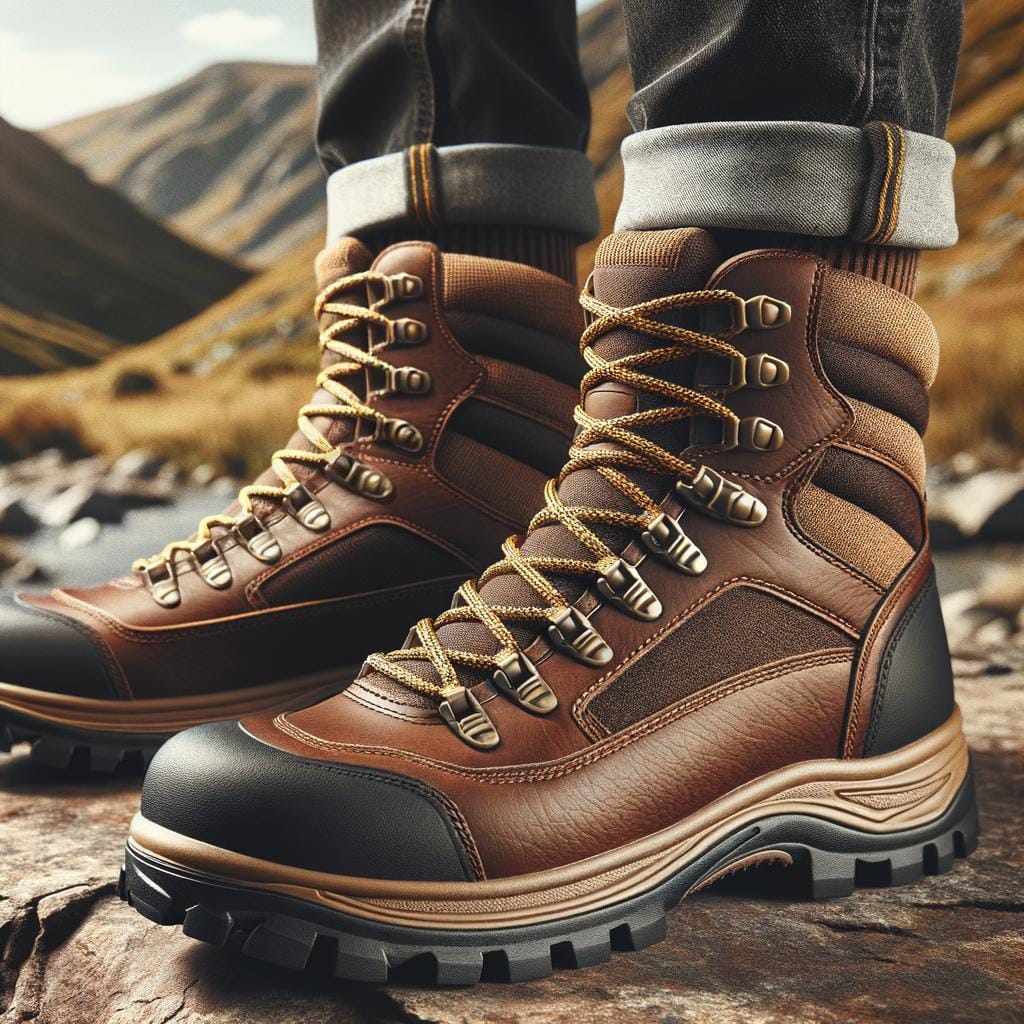Hiking safety is paramount for any outdoor enthusiast embarking on a trek through nature. Whether you are a seasoned hiker or a beginner, understanding the essential precautions and preparations can make all the difference in ensuring a safe and enjoyable adventure. From choosing the right trail to packing the necessary gear, being aware of potential risks and knowing how to respond to emergencies is key when venturing into the wilderness.
Before setting out on a hike, it is crucial to consider various factors that can impact your safety on the trail. These include factors such as difficulty level, terrain type, weather conditions, and distance from help. By carefully selecting a trail that aligns with your skill level and experience, you can minimize the chances of getting lost or encountering unexpected dangers along the way.
Equipping yourself with essential gear is another critical aspect of hiking safety. From proper footwear and navigation tools to first aid kits and emergency supplies, being prepared for any situation can mean all the difference in a challenging scenario. Additionally, understanding how to read trail markings and signs, as well as having awareness of wildlife encounters and knowing first aid basics are key components of ensuring a safe hiking experience.
Choosing the Right Trail
When it comes to hiking safety, one of the most crucial decisions you’ll make is choosing the right trail for your adventure. The trail you select can significantly impact your overall hiking experience and ultimately ensure your safety during the journey. Here are some key factors to consider when choosing a trail for a safe hike.
Difficulty Level and Terrain
Before embarking on a hiking trip, it’s essential to assess the difficulty level and terrain of the trail you plan to tackle. Consider your fitness level, experience, and any physical limitations you may have. Opting for a trail that matches your abilities will reduce the risk of accidents or injuries along the way.
Distance and Duration
Another factor to consider when selecting a trail is the distance and duration of the hike. Take into account how long it will take you to complete the hike based on your pace and stamina. Ensure that you have enough time to finish the trek before darkness falls to avoid getting lost or stranded on the trail.
Trail Conditions and Seasonality
Lastly, assess the current trail conditions and seasonality before hitting the path. Factors such as weather, temperature, snow cover, or rainfall can all impact trail safety. It’s crucial to check for recent updates or closures due to inclement weather or hazardous conditions.
Always be prepared for unexpected changes in weather by packing extra layers, food, water, and emergency supplies for any unforeseen circumstances that may arise during your hike. By carefully considering these factors when choosing a trail, you can help ensure a safe and enjoyable outdoor adventure while minimizing potential risks associated with hiking.
Essential Gear for Hiking Safety
When heading out for a hike, having the right gear can make all the difference in ensuring your safety on the trail. From proper footwear to emergency supplies, packing essential gear is crucial for a successful and secure hiking experience.
Footwear and Clothing
One of the most important aspects of hiking safety is wearing appropriate footwear and clothing. Choose sturdy, supportive hiking boots or shoes that provide good traction to prevent slips and falls on uneven terrain. Additionally, dress in layers to accommodate changing weather conditions and avoid cotton clothing that traps moisture and can lead to hypothermia.
Navigation Tools
Carrying navigation tools like a map, compass, GPS device, or smartphone with GPS capability can help you stay on course and avoid getting lost on the trail. Familiarize yourself with how to use these tools before setting out on your hike to ensure you can navigate effectively if needed.
Emergency Supplies
Being prepared for emergencies is essential when hiking in remote areas. Pack a first aid kit with essentials like bandages, antiseptic wipes, pain relievers, and any personal medications.
Other emergency supplies to consider include a whistle for signaling for help, a headlamp or flashlight for visibility in low light conditions, extra food and water, a space blanket or emergency shelter, and a multi-tool for various purposes. By being equipped with these essential items, you’ll be better prepared to handle unexpected situations while on the trail.
Understanding Trail Markings and Signs
When embarking on a hiking adventure, one of the key aspects of hiking safety is understanding trail markings and signs to ensure you stay on the right path. Trail markings are crucial indicators that guide hikers through the route and help prevent getting lost in unfamiliar terrains.
These markings can vary from colored blazes on trees to cairns or rock piles strategically placed along the trail. It is essential to familiarize yourself with these markings before starting your hike to avoid confusion and ensure a safe journey.
One important aspect of understanding trail markings is knowing how to interpret them correctly. Different trails may have variations in their marking systems, so taking the time to research and understand what each specific marking signifies is vital for staying on course.
Some trails use different colors to indicate different paths or turns, while others may rely on symbols or shapes to provide direction. Additionally, being aware of any trail signs or maps at the starting point can also aid in navigation throughout the hike.
Moreover, maintaining awareness of trail markings and signs not only helps in staying on track but also plays a role in hiking safety by preventing accidents or getting lost. By following these indicators properly, hikers can significantly reduce the risk of straying off the designated path and encountering potential dangers. Remembering to look out for these markers regularly while trekking through changing landscapes is a proactive measure that all hikers should practice for a safe and enjoyable outdoor experience.
| Trail Markings | Importance |
|---|---|
| Colored Blazes | Guide hikers through routes |
| Cairns/Rock Piles | Strategically placed indicators |
| Symbols/Shapes | Varying path directions |
Weather Awareness
When planning a hiking trip, it is crucial to be prepared for any unexpected changes in the weather. Being caught off guard by sudden rainstorms, thunderstorms, or extreme heat can turn a pleasant hike into a dangerous situation. Here are some tips on how to prepare for Mother Nature’s unpredictable nature:
- Check the weather forecast before heading out on your hike. Be sure to look not only at the predicted temperature but also at any chances of precipitation, strong winds, or other severe weather conditions that could affect your hike.
- Dress appropriately for the expected weather conditions. Layer clothing so that you can easily adjust as needed throughout your hike. Lightweight and moisture-wicking materials are ideal for hiking in various weather conditions.
- Pack essential gear to protect yourself from changing weather. This may include items such as a waterproof jacket, extra layers of clothing, a hat and gloves in case of cold temperatures, and sunscreen and sunglasses for protection against harmful UV rays.
Being well-prepared for weather changes can make all the difference in ensuring your hiking safety and enjoyment on the trails. Always prioritize safety when venturing out into nature, and remember to stay informed about weather conditions throughout your journey.
First Aid Basics for Hikers
When heading out for a hike, it’s essential to prioritize hiking safety, including being prepared for any potential injuries that may occur while on the trail. Packing a well-stocked first aid kit can make all the difference in handling minor cuts, scrapes, blisters, or more serious injuries until help arrives or you can reach medical assistance. Here are some key items to include in your first aid kit to ensure you’re prepared for any situation:
- Adhesive bandages of various sizes
- Gauze pads and adhesive tape
- Antiseptic wipes or spray
- Tweezers and scissors
- Pain relievers such as ibuprofen or acetaminophen
- Hydrocortisone cream for insect bites or rashes
- Allergy medication like antihistamines
- Emergency contact information and personal identification
Understanding how to use the items in your first aid kit is just as important as having them on hand. Consider taking a basic first aid course before hitting the trails so you feel confident in your ability to administer care if needed. Additionally, it’s crucial to regularly check and replenish your first aid supplies to ensure everything is up-to-date and ready for use.
In addition to having a well-equipped first aid kit, hikers should also familiarize themselves with basic first aid techniques such as treating wounds, recognizing signs of heat exhaustion or dehydration, and understanding how to help someone who may be experiencing a medical emergency. Being knowledgeable in these areas can help you stay calm and respond effectively in case of an injury while hiking.
By prioritizing hiking safety through proper first aid preparedness, you can enjoy your outdoor adventures with peace of mind knowing you’re ready for whatever comes your way.
Wildlife Encounters
When hiking in the great outdoors, encountering wildlife can be an exhilarating experience. Whether it’s spotting a majestic deer or glimpsing a soaring eagle, these interactions can enhance your hiking trip. However, it is important to remember that wildlife encounters also come with risks. To ensure a safe and respectful interaction with wildlife, hikers should follow some essential tips.
First and foremost, it is crucial to maintain a safe distance from wild animals. Approaching or attempting to feed them can be dangerous and may result in aggression from the animal. It’s recommended to stay at least 50 yards away from most wildlife and even farther for larger animals like bears or moose. Remember that these creatures are wild and unpredictable, so keeping your distance is key to both your safety and theirs.
Additionally, hikers should familiarize themselves with the local wildlife in the area they are hiking. Knowing what types of animals are common in the region can help you understand their behaviors and how to safely interact with them.
Some species may be more territorial during certain times of the year, while others may be more active at dawn or dusk. By being aware of these factors, you can better prepare yourself for potential encounters and act accordingly to ensure hiking safety for both yourself and the wildlife.
Lastly, it’s essential to respect the habitats of the creatures you encounter. Avoid leaving food scraps or litter behind as this can attract unwanted attention from animals and disrupt their natural behavior. By practicing Leave No Trace principles and respecting the environment around you, you can help preserve these precious habitats for future generations of hikers to enjoy while promoting a harmonious coexistence between humans and wildlife on the trails.
Hiking Alone vs Hiking in Groups
When it comes to deciding whether to hike alone or in a group, there are various factors to consider for ensuring hiking safety. Both options have their own pros and cons that can significantly impact your overall experience on the trail. Hiking alone allows for more independence and solitude, while hiking in a group provides added safety and assistance in case of emergencies.
One of the main advantages of hiking in a group is the increased safety that comes with having companions on the trail. In case of an accident or injury, having others around can provide immediate help and support.
Additionally, navigating unfamiliar terrains or challenging trails becomes less daunting when you have fellow hikers to share the experience with. However, hiking in groups can sometimes lead to conflicts over route choices or pace preferences, which may affect the overall enjoyment of the hike.
On the other hand, hiking alone allows individuals to choose their own pace and itinerary without having to compromise with others. It also offers a unique opportunity for self-reflection and solitude in nature.
Nevertheless, solo hikers should be extra cautious and well-prepared since there’s no one else to rely on if something goes wrong. Prioritizing communication devices like a cell phone or emergency beacon can be crucial for alerting authorities in case of an emergency while hiking solo.
| Advantages of Hiking in a Group | Advantages of Hiking Alone |
|---|---|
| Increased safety with immediate help available | Independence and choosing your own pace |
| Less daunting navigation on challenging trails | Solitude for self-reflection in nature |
| Fellow hikers provide support and companionship | No conflicts over route choices with others |
Emergency Preparedness
One of the most important aspects of hiking safety is being prepared for emergencies that may arise while out on the trails. Whether you are a seasoned hiker or a beginner, having the knowledge and skills to handle unexpected situations can make all the difference in ensuring a safe and successful outdoor adventure. Here are some key tips on what to do in case of an emergency while hiking.
First and foremost, it is essential to have a plan in place before you hit the trails. Make sure someone knows your itinerary, including the route you plan to take and your estimated return time.
This way, if you do not return as scheduled, someone will be able to alert authorities and initiate a search and rescue operation if necessary. Additionally, carrying a fully charged cellphone (if there is service in the area) or a satellite communicator can be crucial in contacting help quickly in case of an emergency.
In the event of an injury or emergency situation while hiking, staying calm is paramount. Assess the situation and provide first aid to yourself or others if needed. If possible, move to a safe location away from hazards such as steep cliffs or rushing water.
Remember that it’s okay to call for help – whether that means contacting emergency services yourself or using any available resources like whistles or signaling devices to attract attention from other hikers nearby. Being proactive and prepared can make all the difference when faced with an unexpected emergency on the trail.
Conclusion
In conclusion, prioritizing hiking safety is essential to ensure a safe and enjoyable adventure in the great outdoors. By following the tips and guidelines outlined in this article, hikers can minimize risks and better prepare themselves for any unforeseen circumstances that may arise on the trail.
Choosing the right trail, packing essential gear, understanding trail markings, staying weather-aware, knowing first aid basics, being mindful of wildlife encounters, deciding between solo or group hiking, and being prepared for emergencies are all key components of hiking safety that every outdoor enthusiast should keep in mind before embarking on a journey.
Remember, the goal of hiking is not just to reach the destination but to enjoy the journey itself. By practicing good hiking safety habits and being well-prepared, hikers can fully immerse themselves in nature’s beauty while staying safe and sound. So lace up your boots, pack your backpack smartly, and hit the trails with confidence knowing that you are equipped with the knowledge and tools to have a memorable hiking experience.
Frequently Asked Questions
What Is the Number One Rule of Hiking?
The number one rule of hiking is to always stay on the designated trail. Straying off the path can not only be dangerous for you but also harmful to the environment around you. It’s essential to respect nature and follow established routes.
How Do You Plan a Safe Hike?
Planning a safe hike involves several important steps. First, research the trail you plan to hike, including its difficulty level, length, and any potential hazards.
Make sure to pack essentials such as water, food, a map, compass, first aid kit, and appropriate clothing for the weather conditions. Additionally, inform someone of your hiking plans and expected return time in case of emergencies.
Can You Safely Hike Alone?
Hiking alone can be done safely with proper preparation and precautions. Make sure someone knows your hiking itinerary and expected return time. Choose well-marked trails within your skill level and avoid risky activities like climbing alone or taking unnecessary risks. Trust your instincts and turn back if you feel uncomfortable or unsafe before continuing on your hike.

An avid outdoor enthusiast, writer, and environmental advocate who has spent over two decades exploring the world’s most breathtaking landscapes. With a background in environmental science and a passion for adventure, Frances combines her love for nature with her talent for storytelling to inspire others to embark on their own outdoor journeys.





